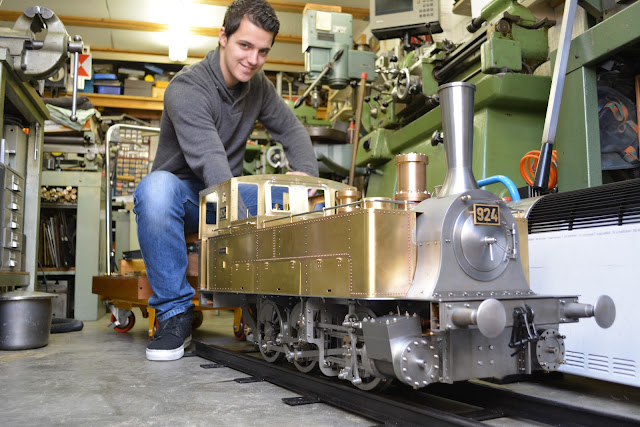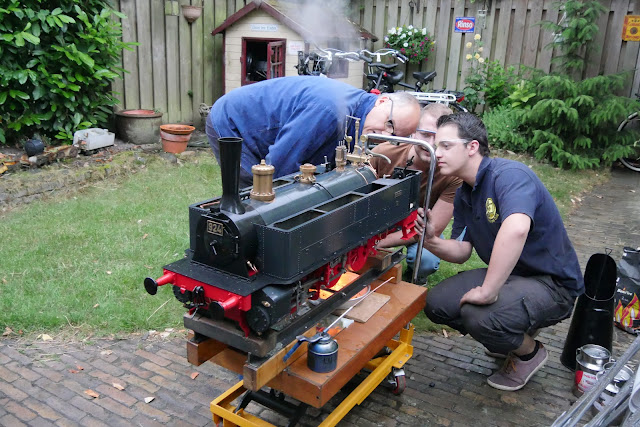The first steam outing with the new loco at PTVF
Loco as it was still under construction in 2014.
Three years later in October 2017 we took the finished locomotive for the first steaming to the magnificent track of the Model Engineering Society of Le Petit Train a Vapeur de Forest in Brussels. Their last weekend of the season (end of September) is always a nice happening, with a warm welcome and a very interesting track layout, with different loops, crossings and some steep gradients. The different routes are set by numerous points and signals.
We had a great weekend and the locomotive performed very well.
(Don't forget to see the video at the end of this page)
A set of wagons was kindly lent to us to play with this weekend.
Out of the car and onto the track in front of the main buildings of the ME society.
In the loco yard, preparing for the first day of driving.
On the steaming bay the boiler and tanks were filled and the fire was lit.
Driving onto the turntable.
The main station.
A stop for the signal, waiting for other trains on the main line.
Getting to know the performance of the enige.
Although the loco is not fully completed yet, Martin is satisfied with it.
Robert (the owner of the wagons) taking the train for a lap around the track.
Nice size of loco.............
After 8 hours nonstop in steam, the last lap of the day.
To the ash pit to drop the fire
and blowing down the boiler.
Cleaning the engine after a weekend of steaming.
PTVF has an excellent engine shed to do this, where the loco is at a comfortable height for cleaning the moving parts and frames.
PTVF has an excellent engine shed to do this, where the loco is at a comfortable height for cleaning the moving parts and frames.
We would like to thank the PTVF for their hospitality and a great weekend!
A short video of the locomotive in steam at PTVF























































